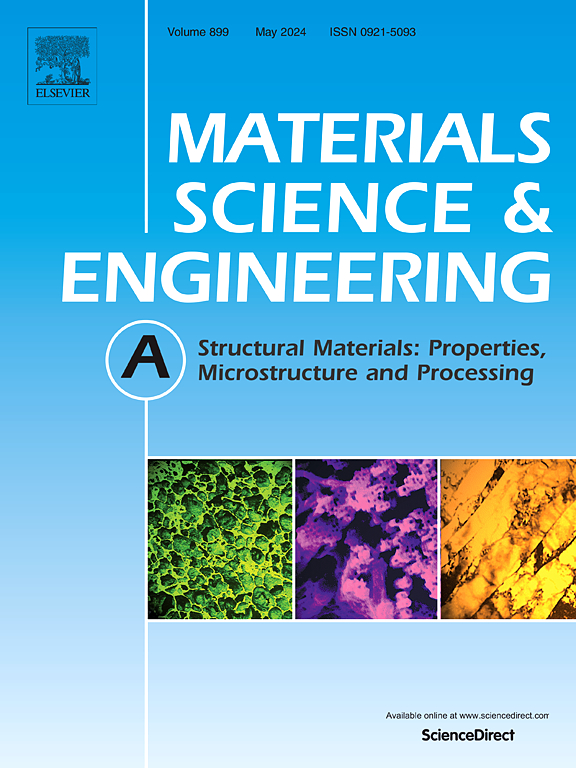Effect of nano-WC reinforcement on high temperature mechanical properties and fracture mechanism of GH3536 deposited by oscillating laser
IF 7
2区 材料科学
Q1 MATERIALS SCIENCE, MULTIDISCIPLINARY
引用次数: 0
Abstract
The GH3536 pure alloy and nano-WC/GH3536 composite material were fabricated using the circular oscillating laser deposition technique. Their microstructure, room temperature (25 °C) and high temperature (980 °C) tensile properties, as well as crack and fracture morphology, were comprehensively analyzed. The results showed that at 25 °C, compared with the pure alloy, the composite material exhibited a 17 % increase in yield strength, a 7 % decrease in fracture strength, and a 95 % reduction in fracture elongation. At 980 °C, the WC/GH3536 composite demonstrated a 9 % increase in yield strength, a 14 % increase in fracture strength, and a 46 % improvement in fracture elongation, compared to the pure alloy. Fracture morphology analysis revealed that with increasing temperature, the fracture mechanism of the pure alloy transitioned from ductile to brittle, while the WC/GH3536 composite toughness has improved. This change is attributed to different grain growth patterns in the pure alloy and WC/GH3536 composite at 980 °C. The pure alloy's microstructure, initially composed of fine and regular crystal cells, transformed into large grains with different orientations. The precipitation phase is discontinuous, leading to intergranular fracture. In contrast, the WC/GH3536 composite's microstructure, reinforced by the precipitation of additional W-rich carbides, strengthened the existing precipitate network, thus preventing intergranular fracture.
纳米wc增强对振荡激光沉积GH3536高温力学性能及断裂机理的影响
采用圆振荡激光沉积技术制备了GH3536纯合金和纳米wc /GH3536复合材料。对其显微组织、室温(25℃)和高温(980℃)拉伸性能以及裂纹和断口形貌进行了综合分析。结果表明,在25℃时,与纯合金相比,复合材料的屈服强度提高17%,断裂强度降低7%,断裂伸长率降低95%。在980℃时,与纯合金相比,WC/GH3536复合材料的屈服强度提高9%,断裂强度提高14%,断裂伸长率提高46%。断口形貌分析表明,随着温度的升高,纯合金的断裂机制由韧性向脆性转变,WC/GH3536复合材料的韧性有所提高。这种变化是由于纯合金和WC/GH3536复合材料在980℃时晶粒生长模式不同所致。纯合金的微观组织由最初细小而规则的晶胞组成,转变为取向各异的大晶粒。析出相不连续,导致晶间断裂。相反,WC/GH3536复合材料的显微组织通过析出额外的富w碳化物而得到强化,强化了已有的析出相网络,从而防止了晶间断裂。
本文章由计算机程序翻译,如有差异,请以英文原文为准。
求助全文
约1分钟内获得全文
求助全文
来源期刊

Materials Science and Engineering: A
工程技术-材料科学:综合
CiteScore
11.50
自引率
15.60%
发文量
1811
审稿时长
31 days
期刊介绍:
Materials Science and Engineering A provides an international medium for the publication of theoretical and experimental studies related to the load-bearing capacity of materials as influenced by their basic properties, processing history, microstructure and operating environment. Appropriate submissions to Materials Science and Engineering A should include scientific and/or engineering factors which affect the microstructure - strength relationships of materials and report the changes to mechanical behavior.
 求助内容:
求助内容: 应助结果提醒方式:
应助结果提醒方式:


